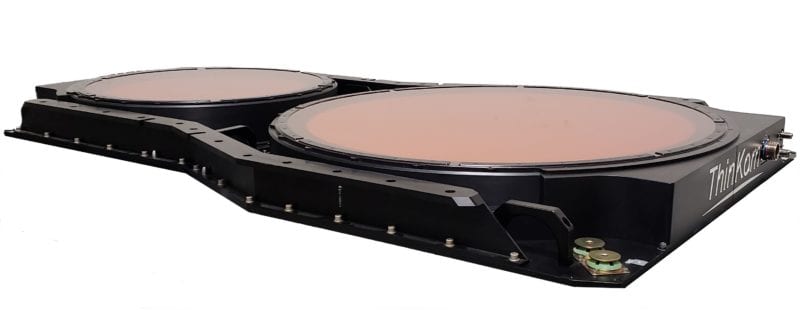Latest News

ThinKom ThinAir Ka2517. Photo: ThinKom
Canadian satellite operator Telesat will use ThinKom‘s Ka2517 aeronautical antennas to connect aircraft with its upcoming Lightspeed Low-Earth Orbit (LEO) satellite broadband service, under the terms of a strategic agreement the two companies announced Wednesday.
ThinKom and Telesat will work together to integrate the Ka2517 as a complete aeronautical user terminal solution, followed by formal type approval of the Ka2517 on the Telesat Lightspeed network, which is expected to begin services in 2023.
Telesat already uses ThinKom’s Ka2517 antennas on existing aircraft. ThinKom and Telesat will conduct additional testing to validate both intra- and inter-satellite handovers on the Ka2517 terminal when the Telesat Lightspeed satellites are in orbit.
Erwin Hudson, Telesat’s vice president of Lightspeed system operations said that both new and upgraded ThinKom antennas would allow aircraft to reach downlink speeds up to 830 Mbps and uplink speeds up to 200 Mbps.
“With ThinKom’s Ka2517 antenna development, airlines no longer have to rip-and-replace aircraft antennas to take advantage of the higher throughput, lower latency, and true global connectivity available with the upcoming Telesat Lightspeed LEO network,” said Hudson.
The Ka2517 utilizes ThinKom’s patented Variable Inclination Continuous Transverse Stub (VICTS) technology and is certified for use on both Airbus and Boeing aircraft.
ThinKom first announced it was developing a Ka2517 antenna system for Telesat then-unnamed LEO constellation back in September 2018. Since then, the company successfully tested the antenna on Telesat’s Phase 1 LEO satellite and validated tracking of the LEO satellite. ThinKom also completed similar trials for UK operator Inmarsat.
Get the latest Via Satellite news!
Subscribe Now